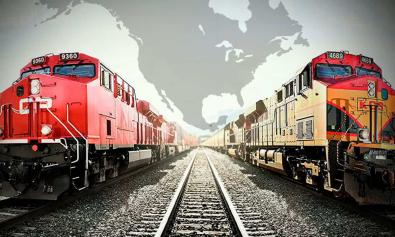The operation of this important rail line will promote economic development and attract new investments. It arose from the approval of the U.S. Surface Transportation Board (STB), and the union of Canadian Pacific (CP) and Kansas City Southern (KCS), who determined April 14, 2023 as the first day of activities.
CP President and CEO Keith Creel said the tri-national rail line is unique and "will instantly inject new North Americanrail industrycompetition into supply chains, and the public, environmental, competitive and safety benefits of this historic combination, clearly recognized by the STB, are extraordinary for our employees, communities, rail customers and the North American economy.
With the start-up of this railroad, the transit of grain, intermodal goods and auto parts trade will become more agile.
Among the cities covered in Mexico are Querétaro, San Luis Potosí, Mexico City and Monterrey, in addition to connections to multiple cities such as Guadalajara, Puebla, as well as the ports of Veracruz, Lázaro Cárdenas in Michoacán, and Altamira and Tampico in Tamaulipas.
While in the United States the route establishes cities and ports such as Brownsville, Laredo, Corpus Christi, Houston, Dallas, Beaumont, Port Arthur, Shreveport, Baton Rouge, New Orleans, Gulfport, Mobile, Meridian, Kansas City, St. Louis, Davenport, Chicago, Minneapolis, Milwaukee, Detroit, Buffalo, Albany, New York, among others.
As for Canada, the CPKC includes cities and ports such as Montreal, Toronto, Quebec, Saint John, Winnipeg, Regina, Calgary, Edmonton, Vancouver and other connections.
The trade relationship between Mexico, the United States and Canada translates into the treaty (USMCA) that represents billions of pesos in trade. In 2020, the Mexican Institute for Competitiveness (IMCO) stated that the United States received 81.2% of Mexico's exports, of which 5.6% were automobiles, 5.4% were processing units and 3.0% were flat screen machines.
Canada, on the other hand, received 2.7% of Mexico's exports, of which 18.1% were vehicles or automobiles, 3.3% were aircraft manufacturing goods and 4.0% were flat screen machines.
Among the positive aspects that the CPKC will bring is the creation of at least 800 unionized operational jobs in the United States; STB also referred that it will contribute to reduce carbon emissions, by shifting approximately 64,000 trucks per year, from road to rail.


























